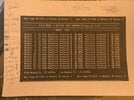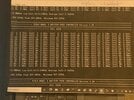It's not that it's too "picky" or anything. The BMS's only ability to influence balancing is to enable a 100mA dump load via bleeder resistors on individual bricks (74 cells). This is miniscule when looking at the whole pack, and with good reason. Once the pack is out of balance beyond the ability of the bleeder resistors to keep it in check, the pack likely has an underlying issue that should be dealt with.
Under normal conditions, the 100mA bleeders are actually overkill for bringing a pack that's aged normally into balance within a reasonable amount of time. In real world use with a regular pack, the balancers are actually pretty rarely enabled for more than an hour or so, and usually only on a handful of bricks. Even the oldest highest mileage packs naturally remain very tightly balanced with minimal assist from the BMS.
Removing just one cell from a brick means every other brick's bleeders need to run for about a full 32 hrs
per charge cycle to keep the pack in balance. (We'll ignore that this means wasting ~1-2% SoC just for balancing...) So every ~1 hr of use the car needs at least ~8 hours rest for balancing to stay in check. And that's just with
one cell missing!
Assuming the BMS doesn't pick up on this immediately and the car is actually usable initially, any time you drive more than a cycle per 32 hours (like on a trip where you hit a few superchargers), you bring the pack more and more out of balance, somewhat exponentially depending on how good the pack is. This is why the YouTuber guy who had one of the other YouTuber guys "fix" his car with a module swap ended up stranded on the side of the road with the dash showing 30+ miles of range. The pack reached a critical threshold of imbalance under load and the BMS was like, "nope!"
This is the inevitable result of any pack modified by removing cells or swapping in mismatched modules. It
will die unexpectedly and generally without warning. Assuming it works at all initially, it could be days or months before it does, but it will stop working. Every. Single. Time. Doesn't matter how well you think you've matched modules. Once the BMS detects an uncorrectable imbalance, it will eventually cease to allow it to be used.
Things like the cell-level fuses are there as a safety mechanism. If a cell level fuse pops in normal use, that's cause for concern, and the BMS rightfully will make a fuss about it. When you do something dumb like literally break a fuse on the pack and cause the same damage that would be caused by something like a shorted cell, the BMS has no idea this is intended, detects the issue, and the end result is the same.
The packs are built to be safe. They're not built to be modularly repaired, and not built so that they can lose cells and still be used RAID style. That's not how it was designed at all. If there's an issue with a cell or cells, the pack needs to be replaced as a whole and that's the
only real solution to such problems.
Addressing this specifically, everyone I'm aware of using these modules in EV conversions
is using modules from the same original pack, so they
are perfectly matched. For example, when you order modules from
057tech, you always get modules from the same original pack (unless > 16, of course... then we do our best to match them closely, even though the use case likely isn't a series set at that point).
Also, a lot of EV conversions are lower voltage than Tesla, meaning modules can be parallelized with fewer modules in series. You
can put mismatched modules in parallel without much issue, since voltage in parallel sets is a constant and the modules will naturally charge/discharge based on their real viability.
This is actually a pretty good analogy.
Every battery pack has aged differently. From the factory, the cells are all a little tiny bit mismatched, but all from the same batch of cells. So they'll quickly find their place within the whole and stay there, with a little nudge from the BMS occasionally, for the life of the pack without issue.
When trying to mix and match, things like mileage don't matter. Cycles don't matter. Capacity doesn't matter. How hard or lightly it's been driven doesn't matter. It's
every factor
combined over the entire life of the pack that determines how it ages and how it will continue to perform. You might be able to get a module that has a very similar total capacity to the rest of a pack, or even get it to balance pretty well with the rest of the modules. But, it's impossible for a replacement module to perfectly match the rest of the pack. Things will always be slightly off, and because these bricks are in a large series set these differences always result in a feedback loop that amplifies the differences over time no matter how small the differences are... and that's just how it is. You don't mix and match cells in series because current under load/charge is constant in a series string by definition. With mismatched modules you end up with the same current at different loaded voltages, resulting in unequal power/energy distribution throughout the pack, resulting in an imbalance.
I could go on and on about the details, but suffice it to say many have tried (myself included), and all have failed. I've tried this several times, always thinking I've gotten close enough to beat the BMS (or, well, physics/chemistry)... and every time the result has eventually been failure. The difference between me and others seems to be that the folks who've been super public about their miracle battery fixes never follow up with the failure portion of the "repair"...





